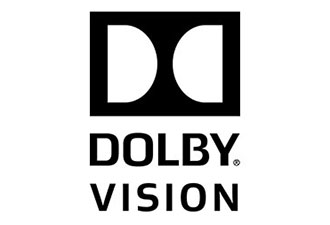Dolby Reveals Details Behind Dolby Vision
 As CES 2014 opened in Las Vegas, Dolby Laboratories, (San Francisco, Calif.) unveiled its new imaging technology called Dolby Vision. This camera to display solution allows for the presentation of higher brightness, wider color gamut and higher contrast images than are possible today. At CES, several demonstrations will be show with commercial products expected in 2014.
As CES 2014 opened in Las Vegas, Dolby Laboratories, (San Francisco, Calif.) unveiled its new imaging technology called Dolby Vision. This camera to display solution allows for the presentation of higher brightness, wider color gamut and higher contrast images than are possible today. At CES, several demonstrations will be show with commercial products expected in 2014.
But there is a lot to this new vision of the future of television, so prior to CES we asked Roland Vlaicu, senior director, broadcast imaging, Dolby Laboratories, to answer some detailed questions. Below are his responses.
How will Dolby Vision work?
Dolby Vision is designed to augment the video fidelity of Ultra HD and HD video signals used in over-the-top online streaming, broadcast, and gaming applications by maintaining and reproducing the dynamic range and color gamut of the original signal as captured. The net result is that the viewer sees a paradigm-shifting viewing experience, richer and more natural. Dolby Vision offers more realistic, subtle distinctions in color, and brighter highlights while also delivering much more shadow details.
Are you actually transmitting more data or is it metadata encoded into the video for transmission and then decoded by the TV or media gateway?
We are using a dual-layer codec concept whereby the encoder takes in the Dolby Vision 12-bit (or more) signal and separates it into the base layer (defined as today’s 8-bit AVC for HD or 10-bit HEVC for UHD/4K) and into an enhancement layer that contains both metadata and the additional information needed to recreate the full Dolby Vision experience. This enhancement layer requires around 20 to 25 percent of incremental bandwidth on top of the base layer.
Is the Dolby Vision encode compatible with HEVC and AVC?
Dolby Vision is a “dual-codec” technology that uses the HEVC 10-bit base layer plus an 8-bit AVC enhancement layer or two 8-bit AVC encodes. With this approach, existing broadcast and encoder/decoder technology may easily adopt Dolby Vision while retaining backward compatibility. The additional two bits (10 vs. 12) make a big difference, especially if you are enhancing both color and dynamic range simultaneously as Dolby Vision does. The 2-bit difference can be observed in today’s content and display technology. As the industry adopts Dolby Vision from ground up and as display technology advances, we anticipate that the difference will be even more apparent.
What are the requirements for the decode in terms of processing power?
As we have developed Dolby Vision into chipsets with silicon vendors, we have focused on leveraging as much of the existing hardware blocks available on a chip as possible. The result is that Dolby Vision requires only a small incremental area on the chip in addition to leveraging existing components such as AVC and HEVC decoders.
Is a special chip needed or can the algorithm be implemented on GPU or CPU processors already in the TVs, or licensed into brand specific IC cores?
We are integrating Dolby Vision into the TV and STB SoCs currently under development for next generation products.
Provide more details on the color space enabled by Dolby Vision. Is it BT 2020 or something else?
Dolby Vision is supporting the BT.2020 color space in full. Alternatively, it can also be configured to support the XYZ color space if needed for certain applications.
What bit depth do you support?
Dolby Vision works with a minimum of 12 bit per pixel up to 16 bit per pixel as needed.
For the dynamic range part, what contrast levels and absolute light levels are supported?
Dolby developed an experimental display with a dynamic range from 0.005 cd/m2 (nits) to 20,000 cd/m2. We performed a series of subjective tests to determine viewer preferences using a mixture of images which included both very dark images and very bright images. The results of these tests led Dolby to conclude that the EDR Master Format should be capable of carrying content within the brightness range of 0 to 10,000 cd/m2.
For the TV makers, they will need a lot more LEDs. About how many more (%) are needed?
Actually, that’s not necessarily the case. The prototypes we are showing at CES are using existing TV designs with local dimming. While the master signal is graded to 4000 nits, we expect that initial TVs will perform in the area of 500-1000nits which is already a big improvement over conventional TVs. However, the peak brightness is not everything that defines the performance of a display or TV. Local contrast and color gamut are as important when it comes to delivering a compelling Dolby Vision experience.
Does Dolby Vision leverage the IP you bought regarding dynamic backlights?
While we believe that Dolby Vision performs best using a local-dimming display, the focus and value proposition of Dolby Vision is centered around content mastered at a higher quality along with the mechanisms to deliver it to receivers.
What is your business model — license to TV, media gateway and ecosystem partners with a per unit royalty?
Our business model for Dolby Vision is same as our business model for audio technology. Royalties are collected from system licensees.
Are you going to take this to the standards organizations?
Dolby Vision largely uses existing standards such as H.264 and HEVC for distribution. For the professional part of the ecosystem, there are elements we have developed that are currently going through standardization. Beyond that, we will continue to educate the industry around high dynamic range and extended color technology.


